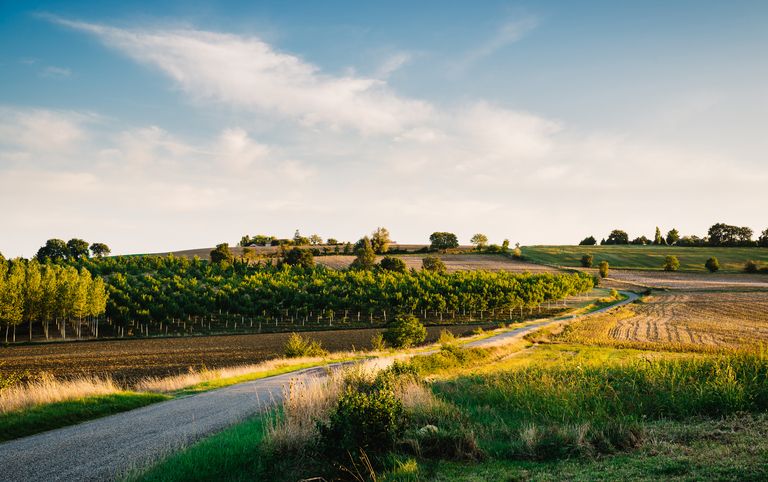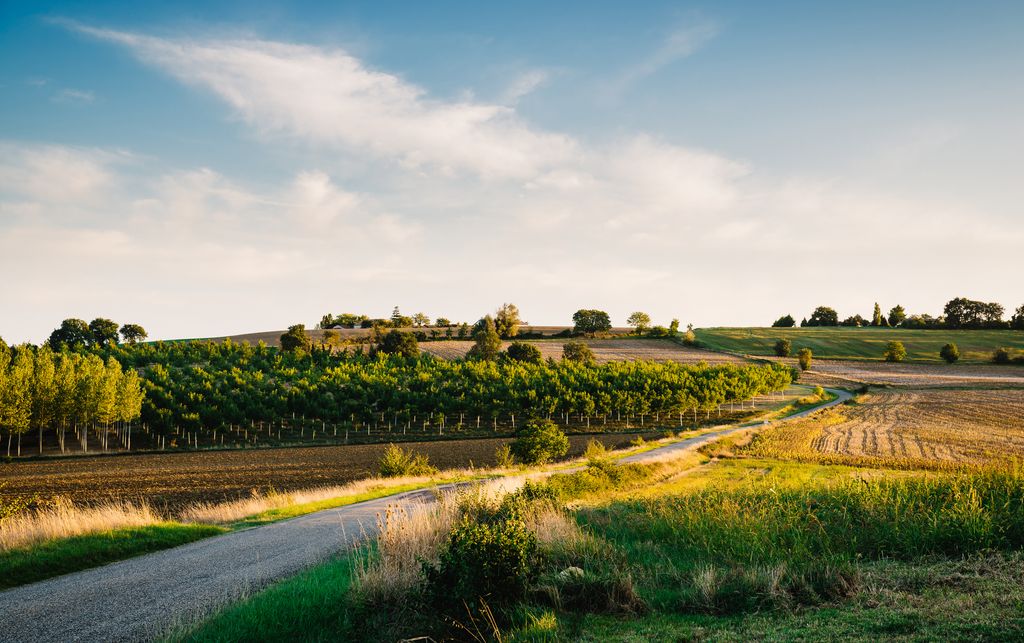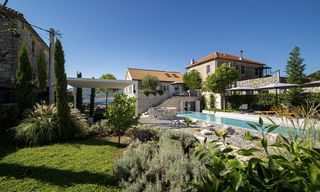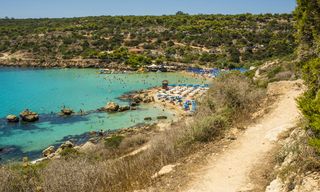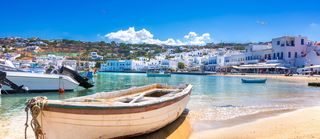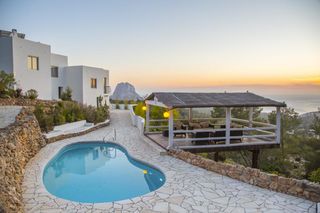Tucked between the Atlantic and the Mediterranean, the Midi-Pyrénées is a captivating region of southwest France where rugged mountains meet rolling vineyards and medieval villages. From the pink-hued charm of Toulouse to the serene beauty of the Lot Valley, it offers rich history, gourmet cuisine, and dramatic natural landscapes. Outdoor enthusiasts, culture lovers, and foodies alike will find endless inspiration in its authentic, unspoilt atmosphere.
Encompassing parts of Gascony, Languedoc, the Gers and several others, you’ll get a varied slice of the whole French experience here, not least if you stay at one of our beautiful villas in the Midi-Pyrénées! And if you want to discover the best of what the region has to offer, our Midi-Pyrénées travel guide is here to show you where to go, what to eat and how you can make the best of your break with some amazing activities.
Why Visit the Midi-Pyrénées?
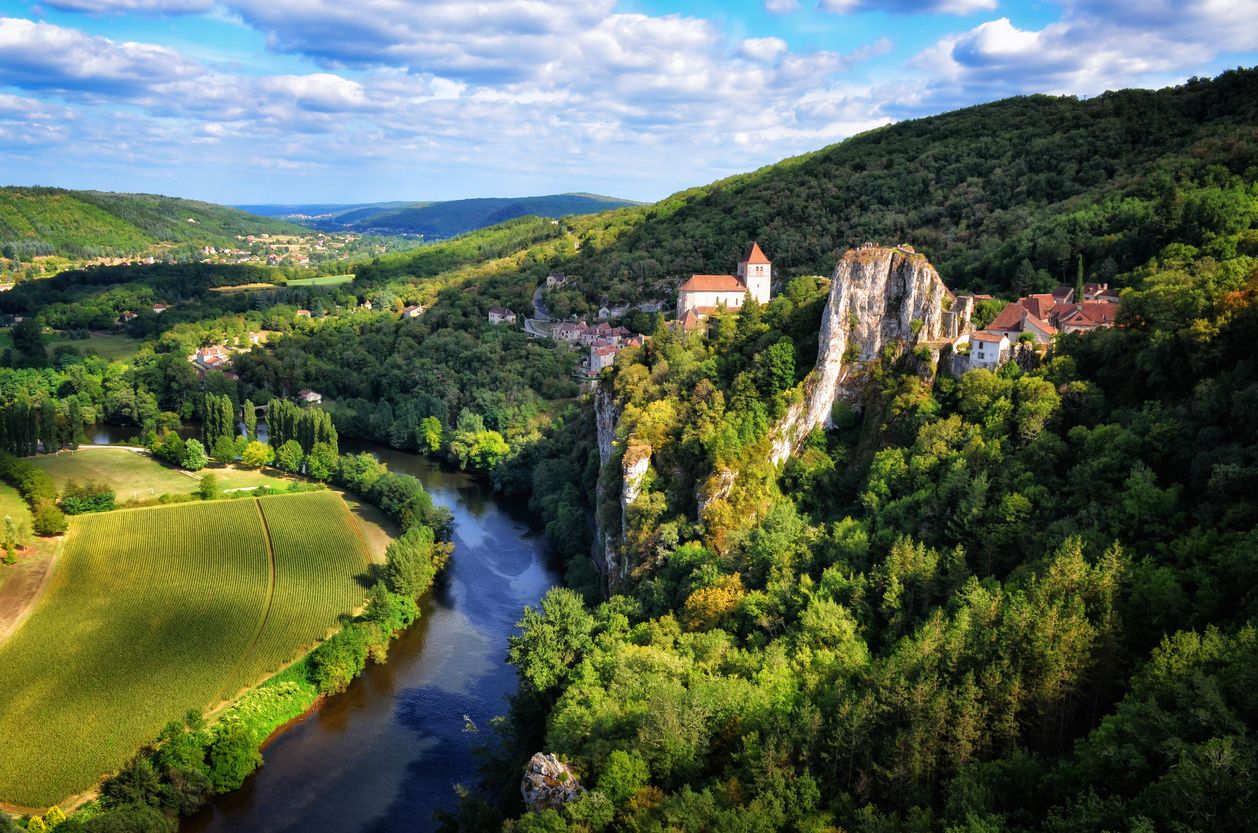
The French Pyrénéan region defies simple summations. Perhaps that’s because of its size: this region takes up a substantial slab of southwestern France that is about as big as Denmark, after all.
The largest city in the Midi-Pyrénées is Toulouse, which has great culture, glorious architecture, and first-class attractions that befit – and often transcend – its size. Outside of Toulouse, there is pleasingly little in the way of urban development, but rather lush rural landscapes well-suited to hiking and outdoor activity.
Serenity seekers tend to go north for holidays in the Pyrénées, where gently rolling hills, wooded valleys, and rivers lend themselves well to relaxing, away-from-it-all escapes. Adventurers tend to head to the Pyrénées down south, where wilder, more dramatic terrain awaits.
Top Things to Do in the Midi-Pyrénées
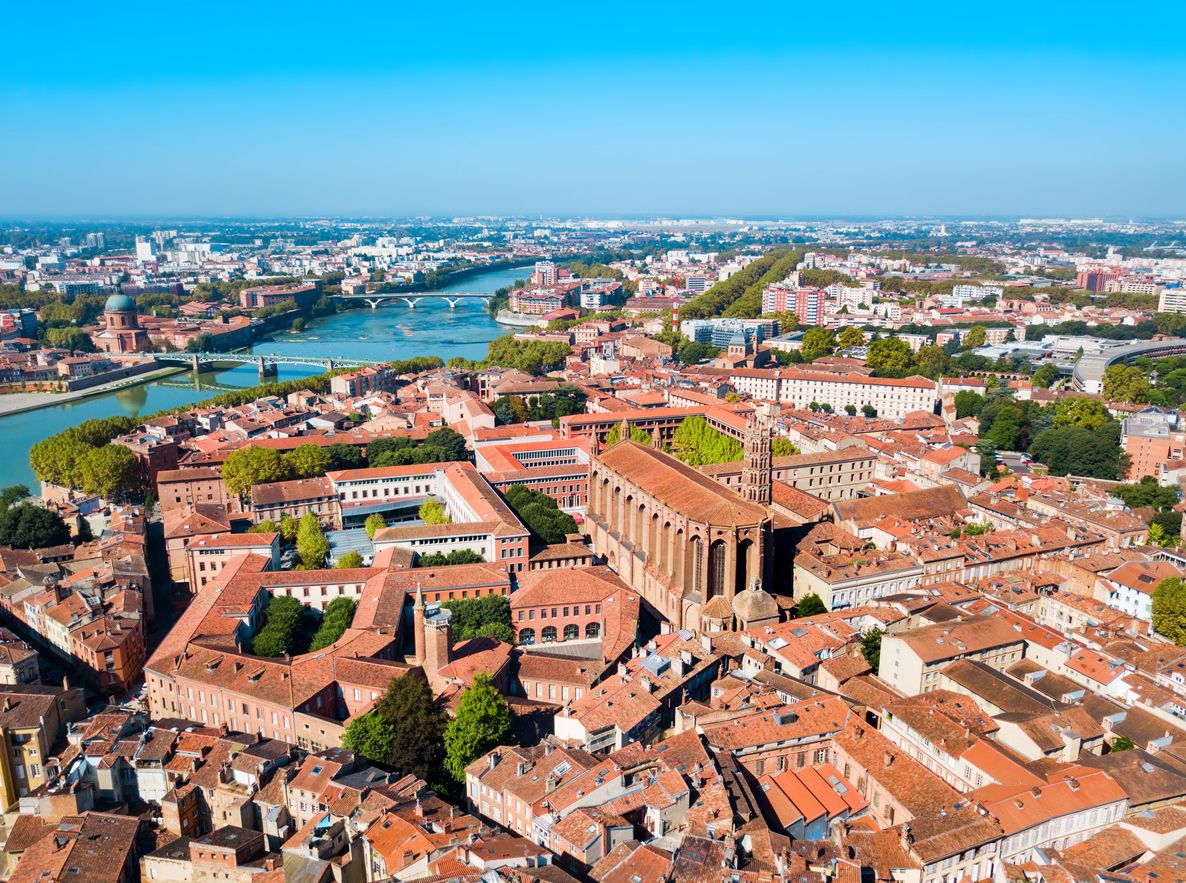
- Moissac – Inspect the famous carved frieze at the Romanesque Abbaye Saint-Pierre.
- Lourdes – Visit the pilgrimage site where the Virgin Mary is said to have appeared in 1858.
- Musée Goya – Survey Spanish artworks at this exceptional museum in Castres.
- Roquefort – See the caves where this famously pungent cheese is matured.
- Pic du Midi – Admire the views from this cloud-skimming mountaintop complex.
- Place du Capitole – Join the locals for a drink on the café terraces on Toulouse’s main square.
- Cathédrale Sainte-Cécile – Marvel at the scale of Albi’s red-brick behemoth.
- Pont Valentré – Stroll across the famous 14th-century bridge.
- Chateau de Montségur – See the ruins of the Cathar castle, which is said to have once held the Holy Grail.
When To Visit the Midi-Pyrénées
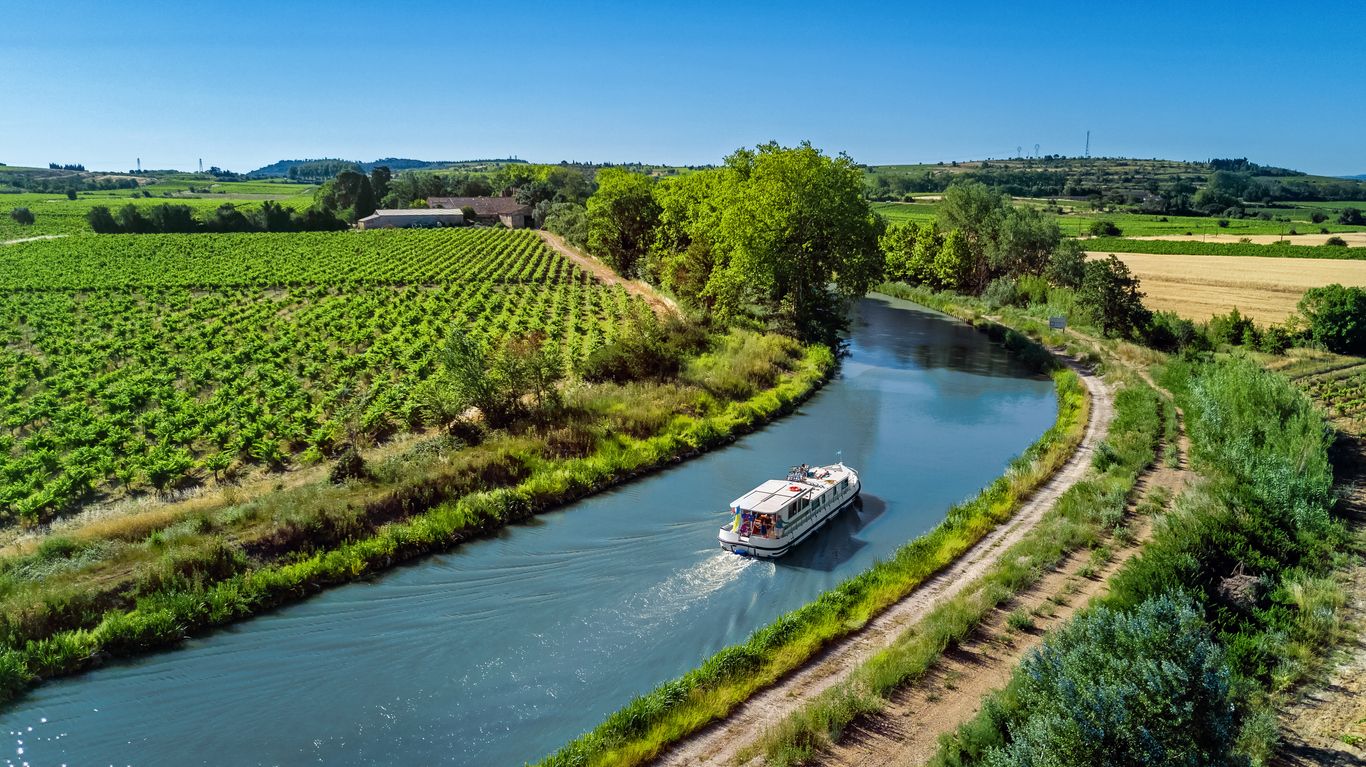
Like much of the South of France, the Midi-Pyrénées is blessed with the kind of warm, sunny climate that has Brits reaching for their passports. It’s at its hottest during July and August when average maximum temperatures rise to the late 20s, though cooler nights provide welcome relief.
Holidaymakers planning to spend most of their time out and about in the French Pyrénées region may be more comfortable arriving between early April and late June or in September and October, when temperatures are just a few degrees lower. Spring and autumn both have unique draws: in spring, the orchards blossom and flowers bloom, while autumn sees the landscape covered in a carpet of myriad rust-coloured hues.
Winter in the Midi-Pyrénées means ski season, and resorts such as Grand Tourmalet are the snow-covered destination of choice for beginners and pros alike. Further north, away from the high-altitude slopes of the Pyrénées mountains, things are a little milder, though you can still expect bright, frosty days.
How to Travel to the Pyrénées and Get Around

- Airports: You can fly to Toulouse–Blagnac Airport, Tarbes–Lourdes–Pyrénées Airport, Rodez–Marcillac Airport or Castres–Mazamet Airport.
- Public Transport: Rail connections from Toulouse link up the regional capital with other major stations, including Albi, Lourdes, Rocamadour and Millau, among others.
- By Bike: The French Pyrénées is Tour de France territory and a fantasy land for keen cyclists. If you don’t want to test your legs on gruelling cols (mountain passes), steer away from the Pyrenees peaks and opt for more casual, less hilly cycle routes. The relatively flat path along the Canal des Deux Mers, for instance, or the low-traffic Lot Valley véloroutes offer easy to moderate cycling that’s perfect for pottering cyclists.
- On Foot: With more than 30,000 kilometres of waymarked footpaths, the Midi-Pyrénées is a walking country par excellence. The Le Puy, Arles and Pyrenean Foothills routes of the famous St. James’s Way pilgrimage all converge here before continuing through the Pyrenees and into Spain en route to Santiago de Compostela.
- Hiring a Car: If you’re arriving by TGV or by air, you’ll probably want to pick up your car in Toulouse. Car hire agencies such as Avis and Hertz have branches in the airport and near the main rail station.
Hidden Gems
Hidden Gems for Holidays in the Pyrénées
- With its circular cluster of historic stone and half-timbered houses, medieval Fourcés’ status as one of the ‘most beautiful villages of France’ (an official designation) is thoroughly justified. The village is best seen on the last weekend in April, when its famous flower festival sees the quaint streets erupt in colour.
- A cradle of aviation, the Midi-Pyrénées is a key location for many world-leading aerospace companies, including Aerolia, Liebherr-Aerospace and Airbus – a fact that is celebrated at the Aeroscopia Museum in Blagnac. Aero-enthusiasts hoping to find out more about the industry, gawp at iconic aircraft and get inside cabins and cockpits will be flying high here.
- The Grottes de Gargas caves are just enough out of the way to escape the notice of most tourists on holidays in the Pyrénées, leaving only a dedicated few to explore in quiet contemplation. Inspect the curious prehistoric animal drawings and handprints – the latter of which appear to be missing a digit. Experts theorise it could be the result of frostbite, disease or even leprosy.
- The Regional Natural Park of the Haut-Languedoc spreads across the Aveyron and Tarn departments of the Midi-Pyrénées as well as into neighbouring Languedoc. Though little explored, it is a marvellous destination for walkers and hikers with a network of well-maintained trails weaving around the unspoiled valley and forest terrain.
- If you’re planning on ascending to the heady heights of the Pyrénées – whether on skis, snowboard, foot or saddle – it’s well worth planning a little downtime in the thermal baths of Bagnères-de-Luchon. This charming old spa town is one of the best French Pyrénées towns and a favourite among sporty types who frequently pause here to soak in the healing waters in between mountain rambles and runs.
Kids
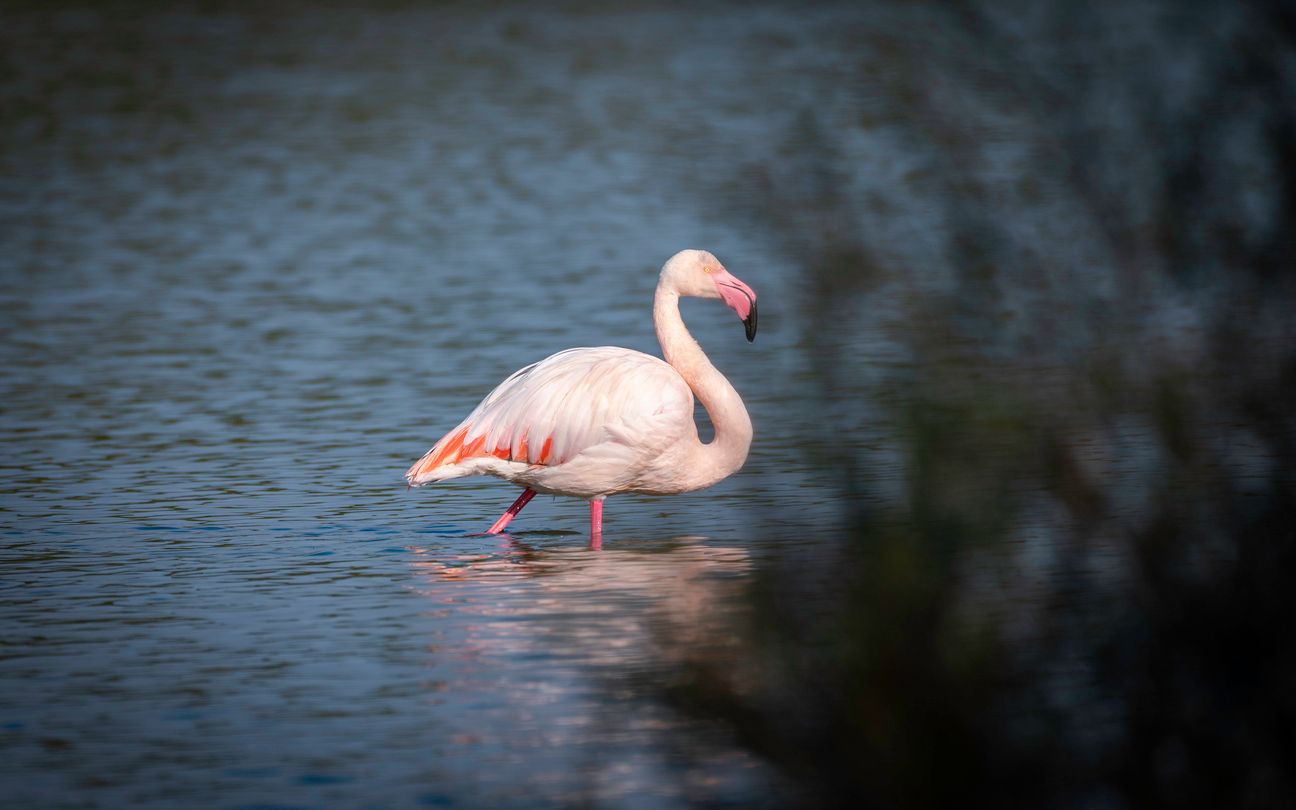
For adults, the Midi-Pyrénées is a walkers’ paradise. But let’s face it, the kids probably won’t be enthused at the prospect of a long stroll. Throw in a treasure trail, pony, bike or raft into the mix, however, and they’ll be all ears.
With valleys, mountains and gorges, the Midi-Pyrénées is really one big adventure playground and is perfect for an energetic family holiday. There are precipitous slopes to walk, whiz or spin down; vast lakes and rushing rivers to swim and paddle through; fortified towns and medieval towers to explore; and dark caves to be breached – as well as an impressively varied selection of family-friendly villas that you can call home for a week. And when all else fails, turn to the region’s animal parks where monkeys, reptiles and all kinds of tantrum-halting cuddly creatures are all but guaranteed to keep the little ones happy.
To save you some valuable time, we’ve taken the initiative and poured through the French Pyrénées region’s family-friendly offerings – here are just a few of the top activities that caught our eye.
The Best Activities for a Family Holiday in the Midi-Pyrénées
Animal Parks
There’s one destination that’s always going to get the kids excited, and that’s the zoo. There’s a good number of zoos, animal parks and aquariums throughout the Midi-Pyrénées, so wherever you’re staying you should have pretty easy access to one.
Historic Attractions
As with much of the French countryside, the Midi-Pyrénées is dotted with grand chateaux, museums and areas of historical interest. While some might leave the nippers a bit bored and cranky, there are loads that cater especially to children and will have them enthralled.
Durandal is a great example of this. Retelling the story of the semi-mythical knight Roland, this performance combines horse riding, acrobatics and sword-fighting to make sure kids of all ages are spellbound.
Similarly, Le Village Gaulois brings the world of the ancient Gauls to life. See what life was like in an authentic recreation of a Gaul village, where you can see how Celtic people worked, played and even ate before getting invaded by the Romans.
Active Adventures
Or how about trying out a new activity during your holidays in the Pyrénées? It’ll be a little bit of exercise, a great chance to try something new and you’re bound to take some treasured family memories back home with you.
You could try your hand at watersports (the Midi-Pyrénées is landlocked, but you’ll find plenty of appropriate lakes and waterways), and the varied terrain means everything from rock climbing to potholing is possible.
Vertige de l’Adour is a good bet for adventurous kids with a head for heights. Children as young as three can tackle these ‘iron routes’ of rope bridges and zip-lines through the mountains, and you’ll be able to enjoy some beautiful scenery at the same time (so long as you don’t screw your eyes up tight to avoid looking down).
Looking for more ideas for the whole family? Why not have a read of the best things to do with kids in Midi-Pyrénées.
Family-Friendly Hiking in the Midi-Pyrénées
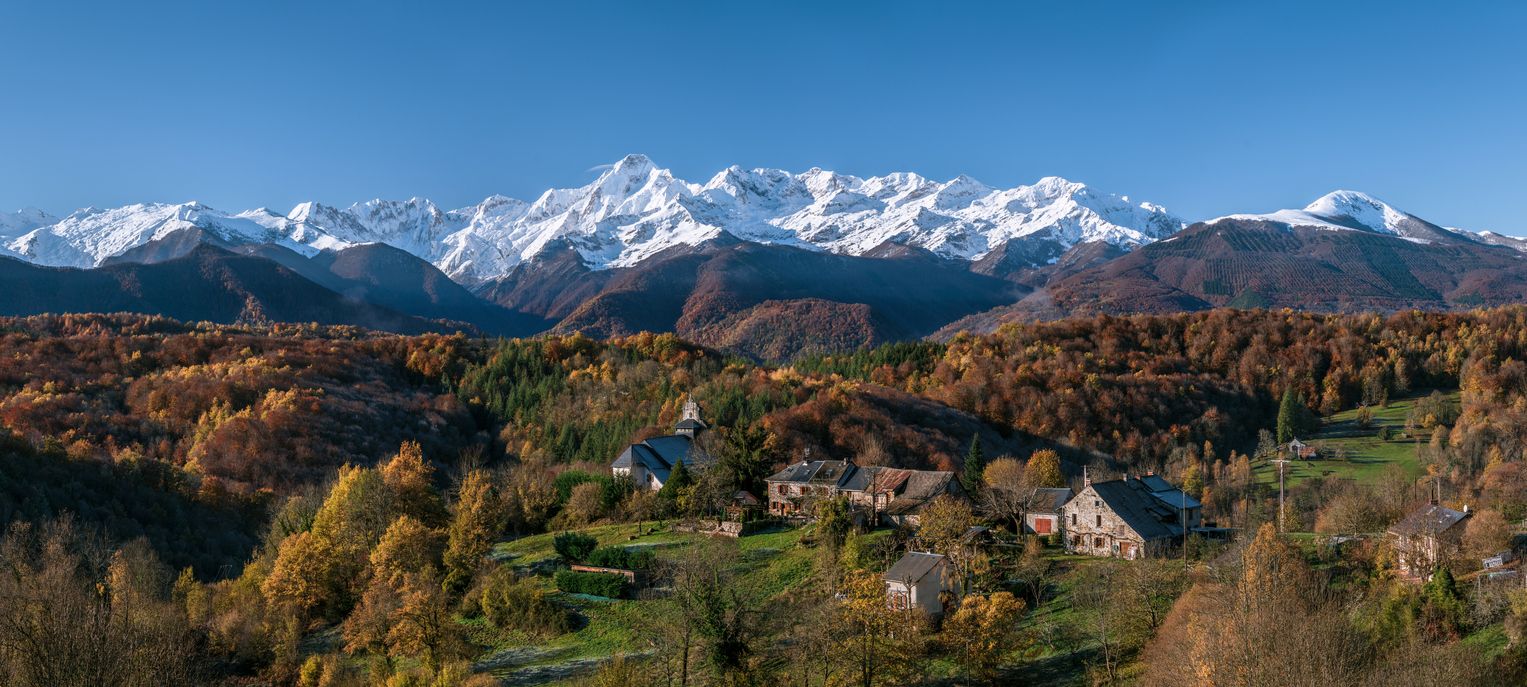
- Because of its huge size and the sheer variety of terrain on offer, the Pont d’Espagne near Cauterets is well worth a visit if you fancy a walk in the Pyrénées mountains of any distance or challenge. As part of the Pyrénées National Park, it also means you’ll get some beautiful scenery to enjoy too.
- The Cirque de Gavarnie skirts an impressive valley near the town of Gavarnie. Head down the right-hand for a shorter and more kid-friendly excursion, though more committed hikers will be pleased (or dismayed!) to know that the back mountain ranges of the valley reach elevations of some 3,000 feet.
- Another great spot with some great views (and a bit of altitude) is the Ariège, the mountainous area surrounding the river of the same name. Drive up to the heights for a surprisingly kid-friendly walk, with Les Sentiers d’Emilie en Ariège being a particularly good choice.
Things To Do
As benefits the warm and sunny climate, activities tend to take place outdoors in the Midi-Pyrénées. In the summer, spring and indeed autumn, it’s a magnet for all kinds of outdoor adventurers. With the craggy peaks of the Pyrenees on hand, hiking, mountain biking, and climbing are particularly popular.
In winter, snow carpets the high peaks and outdoorsy types storm the slopes for skiing, snowboarding, sledding and sleigh rides.
Of course, it’s not all about action and adrenaline in the Midi-Pyrénées. You can slow things right down with some more languid pursuits, from lazy river cruises to slow-paced pony rides, and, should a rare bout of bad weather hit, with rain-proof spa days and craft workshops.
Getting the most out of your Midi-Pyrénées group holiday will require a little forward planning. Luckily enough, we’ve done the spadework for you by compiling a list of our top group activities. All you need do now is pick the quirky chateau that’s just right for you.
Adrenaline-Fuelled Activities in the Midi-Pyrénées
If you really want to impress your friends and see the Midi-Pyrénées from a whole new perspective, why not enjoy a hot air balloon flight? You’ll be able to appreciate the fantastic landscape in a totally new way, and it’s the kind of experience everyone is bound to remember.
- Atmosph’Air Montgolfières offers balloon trips across the region for groups of any number, and you can even arrange something a bit more romantic if it’s just the two of you.
Greeting the fantastic countryside and scenery of the Pyrénées mountains in France head-on is a great way to get acquainted with the region. Sure, you can drive or wander about, but why not (literally) push the boat out when it comes to your mode of transport?
- Take a boat trip down the Baïse River with Gascogne Navigation – it might not get your pulse pounding all that much, but it’s a great way to see the region’s gentle and underappreciated waterways.
- If you fancy something a bit more rustic, grab your jodhpurs and head for Les Crinières Noires. No matter your experience, you can hire a horse at this equestrian centre and take an invigorating trip up the mountains.
More Laid-Back Activities in the Midi-Pyrénées
There’s a great day of exploration to be had visiting Toulouse, otherwise known as “The Pink City” thanks to its redbrick architecture. Some of this dates back to Roman times, so there’s plenty of history and culture to be rooted out as well as some great bars, restaurants and shops.
- Find your feet with Toulouse Walking Tours, which can show you the top picks of the city’s history and some of the best places to eat.
And with such a rich vein of culture running through the region, there’s plenty to get involved with when you travel to the Pyrénées. You could arrange for lessons in a new handicraft or just bring along your notebook and a few coloured pencils and sketch whatever catches your eye.
- You could even try your hand at making your own jewellery with La Vidalerie! There are loads of different classes specialising in different techniques, so pick one that appeals to you and get crafting.
Looking for some real relaxation? The Midi-Pyrénées is dotted with some beautiful spas and wellness centres where you can relax in thermal pools, get a massage or treatment, or just pamper yourself for a few hours (you totally deserve it, by the way).
- Les Bains Couloubret in Ax-les-Thermes has wonderful thermal baths that are bound to have you feeling invigorated, with a ticket entitling you to two hours of soaking bliss.
Foodie

Produce reigns supreme in Midi-Pyrénées. In fact, the French Pyrénéan region has a sizable collection of products that have been honoured with guaranteed quality or origin labels – both decent indicators of quality.
You might begin a meal with foie gras from Gers before dining on Quercy farm lamb, the much-revered black truffles and perhaps even some deliciously sweet Lautrec pink garlic. A cheeseboard will almost certainly include the intensely flavoured Roquefort – probably its most famous export – and creamy Rocamadour, and may even be paired with juicy Chasselas grapes and walnuts from the Lot.
Vineyards have existed in the Midi-Pyrénées since Roman times, though a propensity for producing high-yield table wines damaged the region’s reputation among oenophiles. The quality of its wines is constantly improving.
Dig deeper with wine tastings in appellations such as Gaillac and Cahors, and you’ll be surprised at the quality of the quaffs you find. After feasting, Armagnac (a grape brandy) is the digestif of choice.
With such a varied array of superior produce, eating and drinking well in Midi-Pyrénées is rather easy. But just in case you need a little steering in the right direction, we’ve sized up the best culinary experiences in the region and chosen a few of our favourites.
The Best Restaurants in the Midi-Pyrénées
For a spot of casual elegance in the Midi-Pyrénées, try Le Caillau in Vire-sur-Lot. Found in the midst of some of the region’s beautiful vineyards, you’ll be treated to dishes created from ingredients plucked straight from the garden, with the choice of meals on offer a good reflection of the restaurant’s farmhouse feel.
En Marge in Aureville is where you can pick up delicious food worthy of a Michelin star, and it’s only a short drive away from Toulouse.
Not one for vegetarians, Restaurant a la Montanha in Les Cabannes makes a big deal of the beef on offer – locally sourced from Gascon cows grazing on the nearby mountains, it’s as delicious as it sounds.
For more tasty recommendations, take a look at our blog on the best foodie experiences in the Midi-Pyrénées.
Regional Dishes to Try in the Midi-Pyrénées
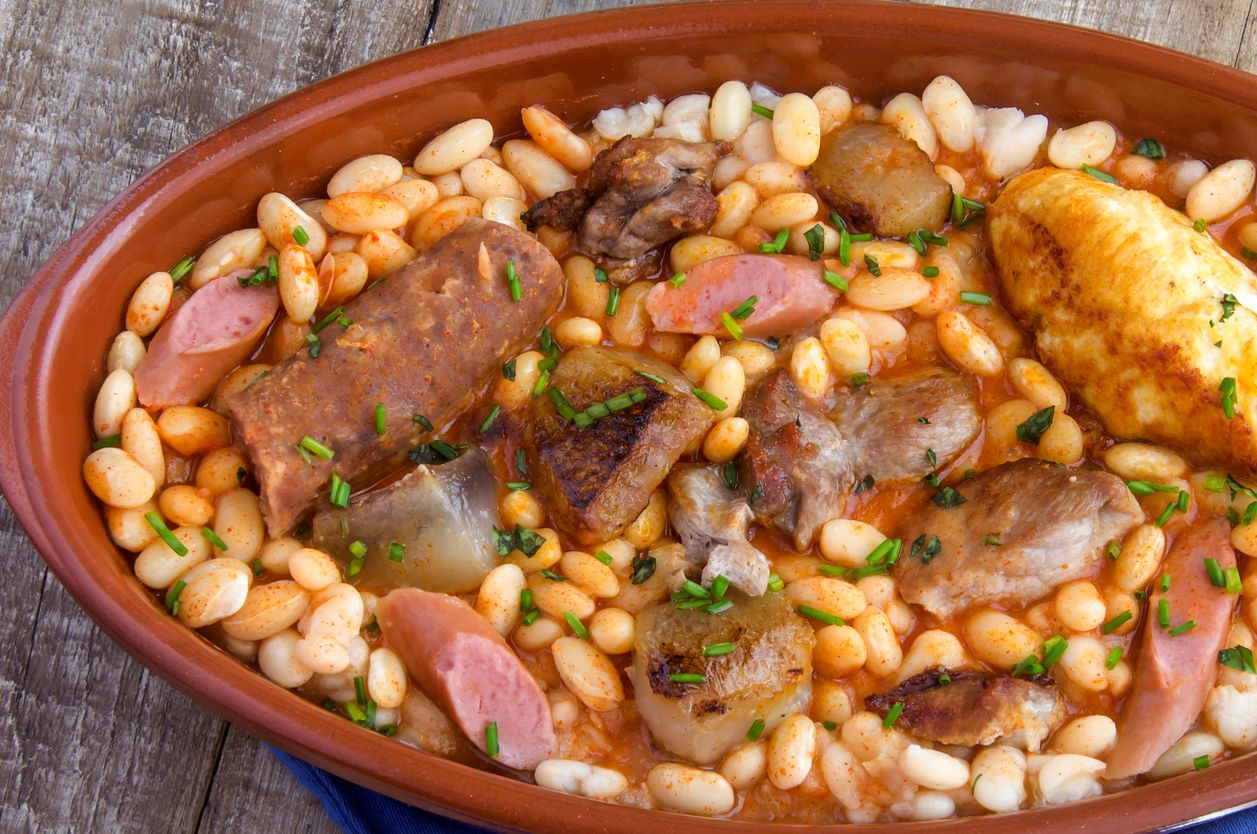
Although it’s now popular on menus throughout the land, the Midi-Pyrénées is a great place to try some of the rich, meaty bean stew known as Cassoulet – and it’ll be even better if it contains some genuine Toulouse sausages.
The salty blue cheese known as Roquefort was originally produced around the Midi-Pyrénées, so if you’re a big fan of anything cheesy, it’s a great place to pick up some of the authentically produced stuff. Castillonais and La Cathare are two goat’s cheeses that are worth keeping an eye out for as well.
Aligot is more of a side dish, but it’s a pretty indulgent one – a mixture of mashed potato, cheese, garlic and butter that goes really well with grilled pork (or some of those fantastic Toulouse sausages).
Got a sweet tooth? Keep an eye out for pastis gascon on the dessert menu in the French Pyrénées. It’s a sort of apple pie made with incredibly light and flaky pastry and flavoured with vanilla and Armagnac.
The Best Food and Wine Tours in the Midi-Pyrénées

The Marché Victor Hugo, which is open every day except Monday in Toulouse, is a great place for a wander and a bit of tasty inspiration. You can find everything you need to whip up a fantastic French meal of your own here, from fresh fruit and vegetables to cheese and meats, followed by delicious cakes and pastries for dessert.
And as with much of France, the wine culture is well worth sniffing out. While the Midi-Pyrénées might not boast as many (or as famous) wineries as Bordeaux and Burgundy, there are still loads to enjoy.
Start your adventure off with Vin Vigne Voyages, who can sort you out with a great wine tour tailored to the kind of tipple you like.
On a more practical level, if cooking (and high-quality kitchen implements) are your cup of tea, then a trip to the Coutellerie de Laguiole Honoré Durand might be in order. Their business is knives, and you can take a tour around the factory and buy yourself a nice souvenir for your kitchen in their shop afterwards.
So, did our Midi-Pyrénées Travel Guide cover everything you needed to know? We knew it would. Now find your perfect villa in Midi-Pyrénées or browse the full portfolio on Oliver’s Travels. Then, contact our concierge to learn about all the fabulous extra you can book to make your trip to France truly formidable.

